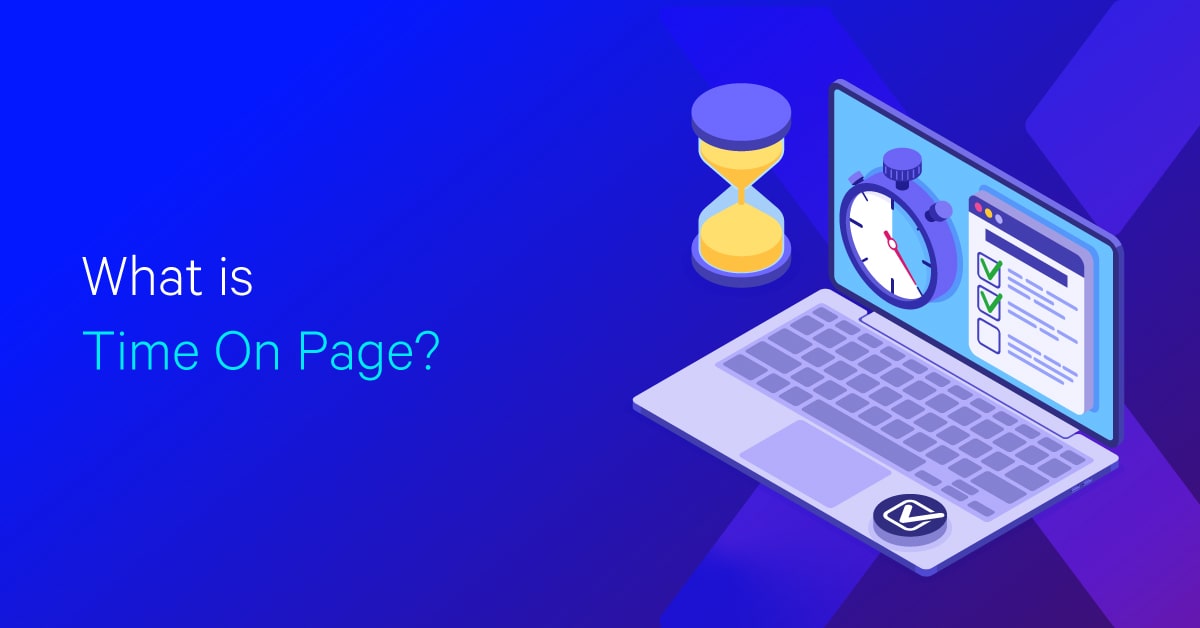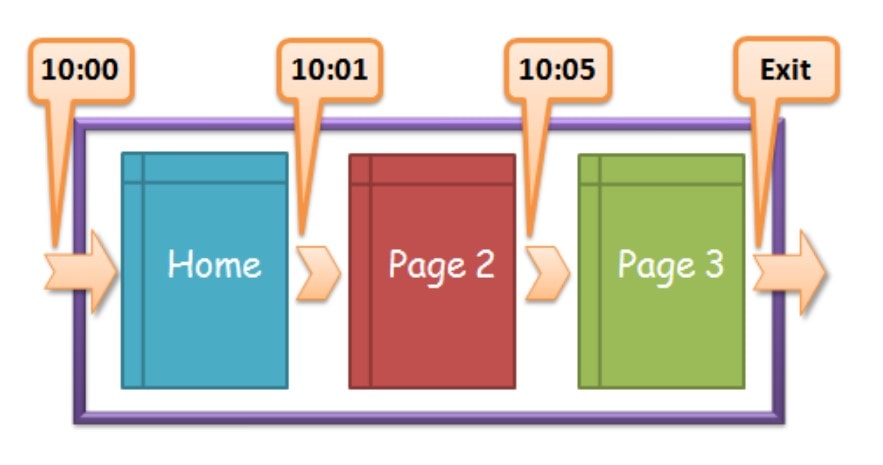What Is Time on Page?

Hand off the toughest tasks in SEO, PPC, and content without compromising quality
Explore ServicesAfter you’ve determined the importance of boosting page views and attracting site visitors, you should look at another site performance metric: Time on Page. According to Brafton survey data, the Average Time on Page for the 181 sites studied was 2 minutes and 17 seconds.
The length of time a visitor spends on one of your pages, like a bounce rate (the proportion of visitors who leave your site after seeing only one page), can be a sign of false leads – people who land on your site, only to realize it’s not what they were searching for and leave quickly.
A bounce rate indicates when a visitor views only one page on your website. Time on Page, on the other hand, provides information about how well your content is truly doing.
Let’s take a deeper look at Time on Page, what it is, why it’s important, if dwell time affects SEO, if Time on Page affects SEO and if Time on Page is a good metric.
Shall we?
What Is Time on Page?
The time spent on a web page is determined as the time elapsed between the point at which a user lands on the page and the point at which they move on to the next one. The time spent on the previous page is measured when you click a link to proceed to the next page on the website. If the user leaves the website without visiting another page, the time-on-page is 0.
Average Time on Page is a web analytics statistic that calculates the average amount of time that all website visitors spend on a particular page. This metric does not take exit pages or bounces into account, instead of measuring the average time spent by users on non-exit pages. The final page of a website session is known as an exit page.

Why Is Time on Page Important?
Average Time on Page measures the amount of time people spend on a certain page. This metric is most often tracked by Google Analytics, although it may also be tracked by other providers. While it appears straightforward, there are a few ideas to consider before calculating this metric.
This statistic is not recorded in Google Analytics because it excludes a type of page view known as an exit page. A page exit happens when a user leaves a page, thereby ending the user session on the site, and such pages are known as exit pages. Bounces are also omitted from the computation.
Google Analytics measures Time on Page and time on site by comparing the timestamps of hits.
Because of this methodology, the Average Time on Page as monitored by Google Analytics has the potential to be greater than the truth, particularly for sites specifically meant to be departure pages – such as an order confirmation page. It is critical to remember this while studying Average Time on Page, as it is ideal to measure this metric only for pages with a low departure rate.
When utilized appropriately, this statistic can provide insight into how engaging content is to the viewer. A low Average Time on Page when it should be higher indicates that the user does not find the material interesting or engaging enough to spend time on it. At the same time, high figures should be regarded with the understanding that time spent on the page is recorded even while the page is open in the background as a tab.
Context is important, as it is with other website performance indicators, and it is best practice to monitor each statistic alongside other metrics to get a complete picture of user engagement.
Most marketers and eCommerce businesses know that only 49% of the time does the top-ranking website receive the most search traffic.
Time on Page FAQ
Does Time on Page affect SEO?
Larry Kim conducted an experiment to demonstrate the significance of dwell time in SEO (Search Engine Optimization). He compared the positions of WordStream in the SERPs before and after Google launched RankBrain.
Many of their websites were ranking well before RankBrain (i.e., prior to 2015).

As shown in the figure above, several of their high-ranking pages had lower average time spent on the page. This indicates that Google was not ranking web pages depending on how long visitors spent on the page.
Following the implementation of RankBrain (i.e., in 2017), their web page rankings were influenced by the number of total time visitors spent on them.
Except for two sites, all of the top-ranking pages had above-average time spent on the current page.
This implies that search rankings and the real time spent on a single page visit go hand in hand (dwell time).
Without a doubt, Google rewards pages with longer stay times with higher search results ranks.
Does dwell time affect SEO?
Dwell time is the length of time a person spends on your website after leaving a search engine query to return to the search engine.
It’s important to note that Google Analytics records data like bounce rate and session duration, but not dwell time. (While the session duration may span many pages (homepage, first page, etc) or articles, dwell time concentrates on a single piece of content)
However, dwell duration has an indirect influence on your search ranks. This is because it informs Google whether or not your website provides value to users.
Dwell time indicates the quality and relevancy of your content. The longer visitors stay on a page, the more value that page provides to users. And the more indications Google receives about the quality of that web page, the better.
That is how dwell time indirectly affects your search rankings.
Is Time on Page a good metric?
Time on Page metric is good if the page is not the last page of the visit. The issue occurs with exit pages, when the Time on Page is 0. Google Analytics takes this into consideration when calculating Avg Time on Page (ref), eliminating the impact of the lack of exit page data:
Time on Page Average = Time on Page / ( Pageviews – Exits)
If a page does not have a high exit rate (% Exits), the Avg Time on Page is a fairly accurate representation of the true average. With a greater exit rate, you should have less trust in the average measure because it is based only on the percentage of total users who moved on to see another page.
A higher percentage of exits equates to a lower level of trust in average Time on Page.
Average Session Duration (Questionable)
The Session Duration statistic lacks the ability to exclude the effect of exit pages. Every session has an exit page, and if there aren’t many pages in the visit, losing the last interaction hit might have a significant influence on the total.
The Sessions count is 1 but the Session Duration is 0 in the extreme instance of a “bounce” visit with only one page seen! Google employs a simple method (ref) to get the Avg Session Duration:
Session Duration on Average = Session Duration / Sessions
This straightforward calculation is strongly impacted by the absence of time on exit pages, particularly for sites with low Pages / Session values.
As a result, using Avg Session Duration is a key performance indicator that is not advised since changes in the number of pages seen each session, the number of bounces, and the total duration of all sessions can all have an impact on the statistic.
If you have a high Bounce Rate, your average session duration will be considerably reduced – even lower than your Average Time on Page.
Many users are perplexed by this: the Avg Time on Page calculation eliminates the effect of Bounces (Exits), but the Avg Session Duration calculation includes the Session count for those Bounces, which lowers the average.
If a page has a low percent exit, the Google Analytics numbers for Avg Time on Page provide a decent indicator of how much time people spent looking at it on your site.
The average session duration metric should not be used as a key performance indicator since it is highly impacted by the number of pages per session, the bounce rate, and the number of sessions.
Summary
Hopefully, this article has given you a better understanding of Time on Page.
Examine the content to see if your Time on Page for a given page is too short. Is it a long authoritative essay or a graphic comparing products/services that can be devoured in seconds? Is this page on your website converting well or leading to conversions?
The bounce rate can provide some insight into this. If you’re spending too little time on the page and not receiving the results you want, consider adding some UX enhancements to the page, such as video or eye-catching images. Another excellent method to improve user experience is to increase site performance as well as social media marketing.
In certain situations, your website visitors will spend a significant amount of time on your site reading content, viewing videos, and looking at images. However, if they are not phoning you, purchasing stuff, etc., there are certainly some serious difficulties. If the bounce rate (exiting after one-page visit) is high, make the page’s intent obvious.
If a person spends a significant amount of time on your website without converting, they may be perplexed about your products or services. In the case that users have questions, consider including a FAQ page or clear contact information.
Time spent on-page is only one of many essential indicators for website owners to consider. It provides you with more information on how people interact with your website.
In case you need help with this, feel free to reach out to us!
Hand off the toughest tasks in SEO, PPC, and content without compromising quality
Explore ServicesWritten by Adam Steele on December 22, 2021
COO and Product Director at Loganix. Recovering SEO, now focused on the understanding how Loganix can make the work-lives of SEO and agency folks more enjoyable, and profitable. Writing from beautiful Vancouver, British Columbia.





